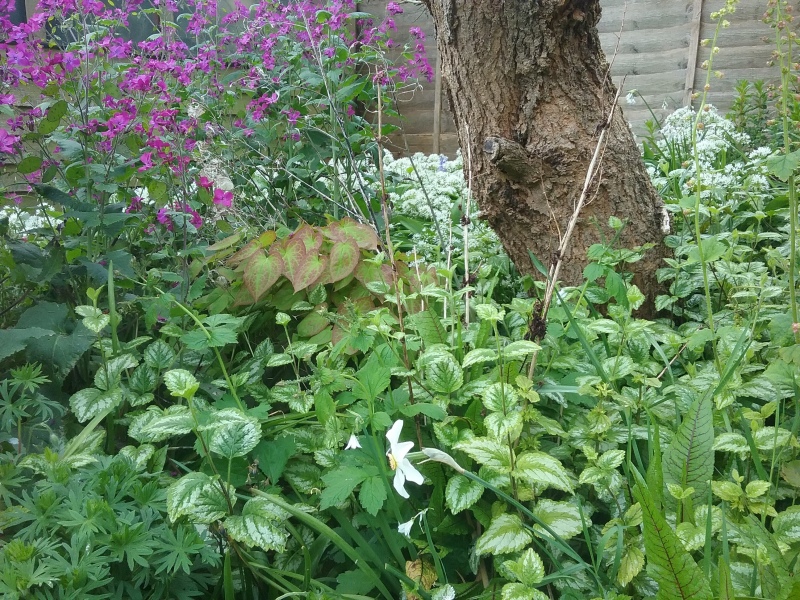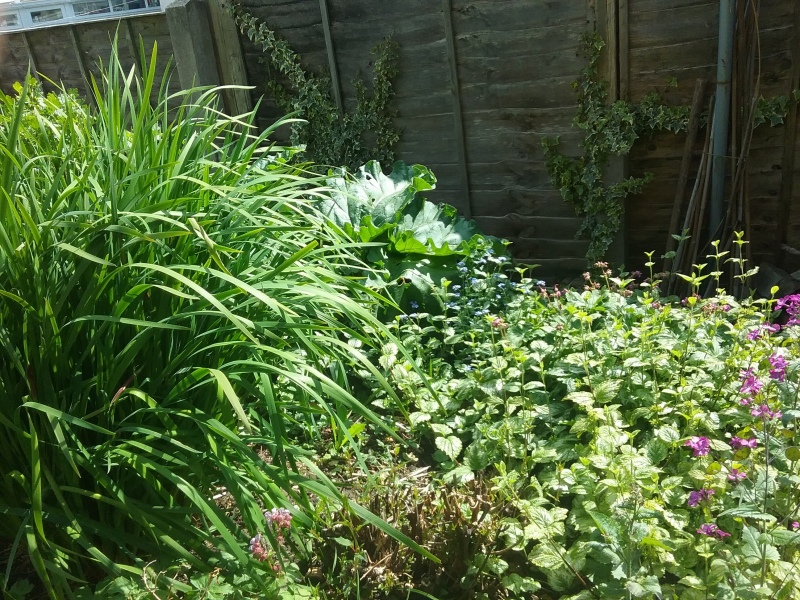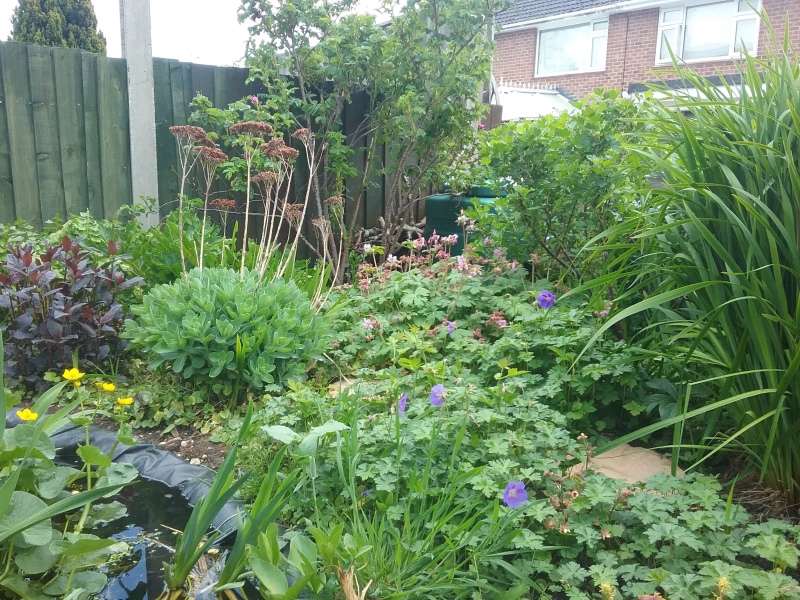Went to the dentist this morning - he's growing a few veg at the back of the surgery and was asking for tips.
A lot of my friends are also starting to grow things for the first time.
So, here are my handy tips on compost.
1. Anything organic will rot. (by organic, I mean 'made of organic material', not 'grown without pesticides')
You can compost: cotton shirts/towels, woollen jumpers, all kitchen waste (if you're worried about rats, then either exclude meat or else put chicken wire underneath your compost bin), all weeds (some people exclude dandelion and bindweed roots, but I find even those usually get killed, though I wouldn't put bindweed roots on a heap in the shade), all grass cuttings (but do mix them up with the other stuff if you have a lot of them), corrugated cardboard, cardboard egg boxes (don't squash them, they provide handy air pockets), used straw bedding from hamsters, rabbits, etc, sawdust, hedge clippings (but only if well chopped up, and do mix with other stuff) and probably other stuff as well.
I'm just editing a book on the history of Loose allotments ('Loose' is a village in Kent and is pronounced 'Looze'). In the last century, there was a butcher who annoyed his neighbouring plot holders by putting all the left-over bits of meat on his plot. They rotted down just fine, but the smell and the rats weren't popular...
Another plot was found to have lots of small buttons on it. My mother-in-law (keen gardener and social historian) worked that one out. The plot must have been fertilised with 'shoddy', which was what cheap clothes were made of - it was made from recycled woollen cloth. The clothes rotted away and left the buttons behind.
Hop waste was also popular as a mulch in Kent.
2. Kitchen waste is easy to collect.Everything from the kitchen: potato peelings (If you really must peel your potatoes and lose all the vitamins...), veg peelings (same comment about vitamins - there are almost no vegetables where you gain anything by peeling them, expect possibly squashes when the rind has hardened), stale bread, food scraps, left over takeaways, past the date foods, apple cores - if it's food of any kind, you can put it in the compost.
Keep a small compost caddy in the kitchen - I line mine with newspaper which makes it easier to empty and to clean - and the newspaper can, of course, be composted as well. There are lots of compost caddies on the market. A few examples can be found
here, but there's lots more.
A lid is necessary to keep out flies, but smell (in my experience, at least) is not a problem as long as the bin is emptied as soon as it is full. You have three options with lining.
a. No lining. I've done it this way in the past. You'll find the bottom of the bin can get a bit wet. I just clean it out with a handful of newspaper and then compost the newspaper.
b. Biodegradable lining. I'm not keen on these personally. They have a high carbon footprint to manufacture and you need to pay real money for them. (and they don't rot as fast as newspaper)
c. Newspaper. Not decorative, but it uses up our free newspapers and helps soak up some of the moisture from the waste. I use three or four pages at a time to line mine. I overlap them a bit and fold them over the edge to keep them in place. I try and have multiple layers at the bottom of the bin. The paper will soak up most of the moisture, though you'll probably need another page to clean out after you empty and before you make a new liner.
When your caddy is full, take it out and tip it into your compost bin.
3. Compost Daleks don't take up much space.
They're called
'daleks' for obvious reasons, though most of them don't look like this:

but more like this:

There are other kinds of compost bin, but 'daleks' tend to be cheap and cheerful and often available at a discount from your local council. They don't take up a lot of space and are easy to use. (they can be a bit fiddly to remove the compost at the back, but if the worst comes to the worst, you can just lift the whole thing up, dig out the good compost and stick the rest back again)
At the end of the day, any kind of compost bin/heap will do.
We have three daleks in our garden to fit into smaller spaces, down the allotment, we have two heaps surrounded by a crude wooden fence.
Tip everything into your dalek (or on your heap) - do NOT compress it (the air spaces are an important part of the process). If you run out of space in the bin, start another one.
4. There is a perfect mix, but you don't need to worry about it.If you start reading up on compost, you'll find all sorts of fancy recipes. Don't worry if they sound too complicated.
The basic rule is this: use a mixture of different stuff and it will all work out fine. Don't let one ingredient dominate (apart from weeds, you can have as many of them as you like). You can speed up the process by mixing up your heap with a fork, but it isn't essential.
If you have all grass clippings and no weeds or woody bits, then approach a neighbour. They'll be only too glad either to give you an occasional bag of weeds/hedge clippings, or alternatively to take your grass clippings. I get stuff from three of my neighbours now.
5. If your compost bin has a lid, water it occasionally.Heaps don't have lids -they get water from the rain. They rot down fine.
Daleks have lids (which can help the heat build inside them on a sunny day and kill weed seeds). Take the lid off now and then and if it looks really dry, chuck in a bucket of water. This is not a fine art, and it won't be the end of the world if you forget.
6. Real Compost is lumpy and has twigs in it.Packets of compost from garden centres are full of fine-grained black stuff (and cost a lot of money). That's because they have a lot of peat in them. This fine if you want to grow seeds in trays or acid-loving plants, but for everything else, your home-made stuff will be better. Peat is very low on nutrients.
How do you know when your compost is ready? When you can't recognise the original ingredients any more. (Don't worry about egg shells, just smash them and leave them in - they're good calcium). The exception is twigs. You have two options with twigs. You either leave them in the mix you're going to spread on your garden (which is what I do with the small ones), or chuck them back in the compost to go around a second time (which is what I do with the bigger ones). Stuff bigger than twigs should not go into the compost in the first place. (twigs, if you really want to know, add carbon and help create air space and structure in your compost bin and are a useful part of the process even if they don't rot completely the first time around)
7. You can use compost almost anywhere.When you have your compost, lumps, twigs and all, you can either dig it into the soil, if you're preparing a new area, or simply put a layer an inch or two thick on the surface around your plants. Don't put it right up against the stems - plants know where they think the surface should be and you shouldn't argue with them. You can spread it under trees, around fruit bushes, between rows of plants, inbetween perennials, anywhere where you think your plants are hungry.
Over the next year, your layer of compost will mysteriously vanish - ready for you to add some more the next year. And your plants will be bigger, healthier, and crop better.











